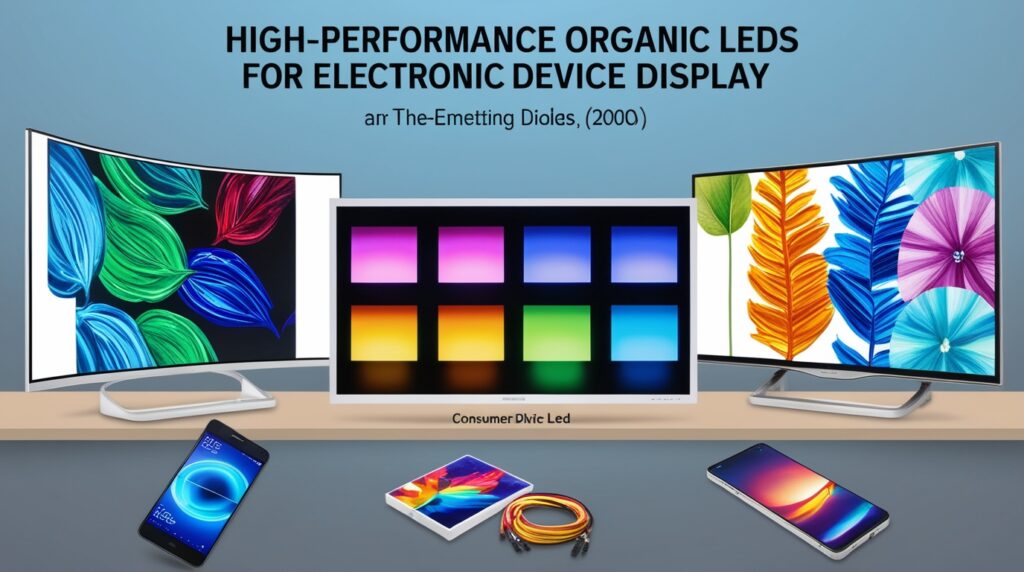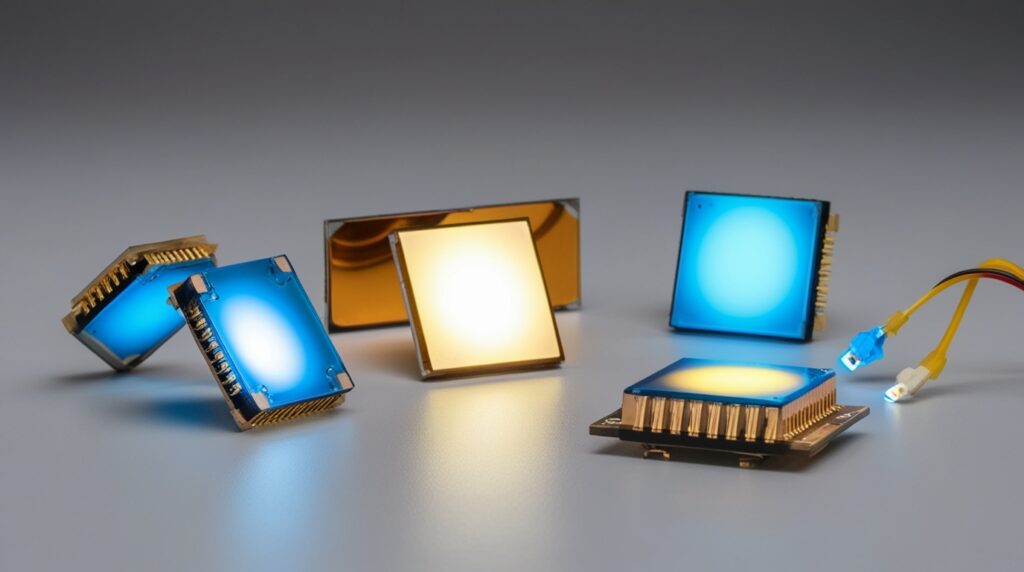Who were the key figures in the early development of holography, and what were their major contributions?
The early development of holography is a captivating chapter in the history of optics, characterized by significant contributions from several pioneering scientists. Dennis Gabor, a Hungarian-born British scientist, is universally recognized as the father of holography. In 1947, while striving to improve the resolution of electron microscopes, Gabor developed the theoretical foundations of holography. His groundbreaking work involved the concept of wavefront reconstruction, where interference patterns in waves could be used to create three-dimensional images. Gabor’s method employed conventional filtered-light sources, but the limitations of these light sources prevented immediate practical applications.
The invention of the laser in 1960, which provided coherent light, ultimately allowed holography to flourish. Gabor’s pioneering efforts were recognized with the Nobel Prize in Physics in 1971. His contributions laid the groundwork for the field of photonics and influenced a wide range of scientific endeavors, from advanced microscopy to gravitational wave detection. Other key figures contributed to the development and refinement of holography. Among them were G.L. Rogers, A.B. Baez, H. El-Sum, P. Kirkpatrick, and M.E. Haine, who collectively worked on enhancing the technique and overcoming early technological constraints, such as the use of low-coherency mercury arc lamps. Another notable contributor was Yuri Denisyuk, who developed the reflection hologram.
Denisyuk’s technique, which used a single beam to both illuminate the object and serve as a reference, drew inspiration from the principles of Lippmann photography. Gabriel Lippmann, a French physicist, was an early visionary who had laid foundational ideas for color photographic recording through the concept of radiance photography, earning him the Nobel Prize in 1908. Together, these scientists and their groundbreaking contributions have unlocked the captivating world of 3D visualization, enabling advances in various fields and shaping the future of holography.
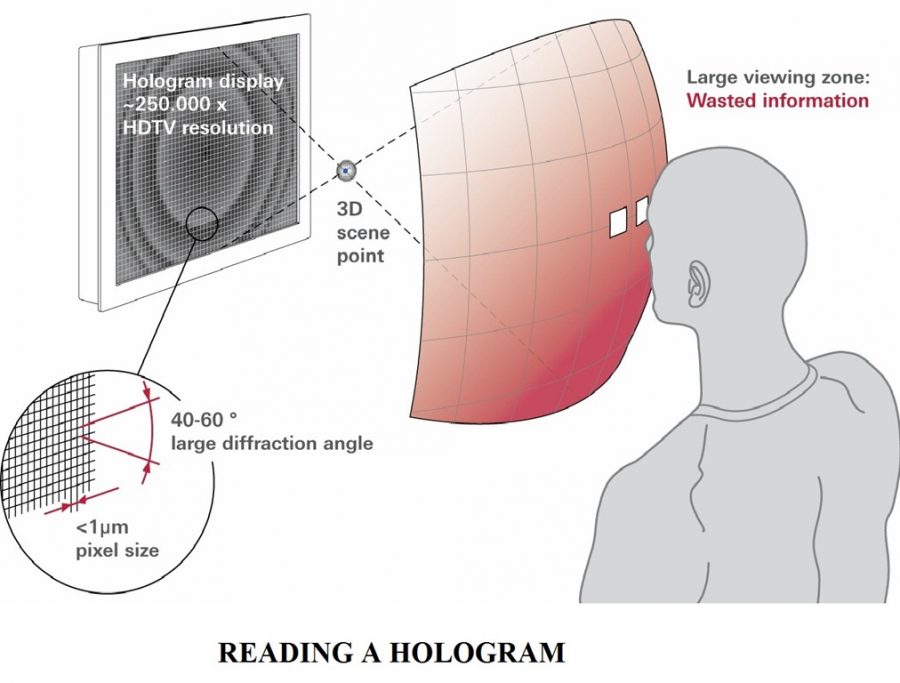
What were some of the technological breakthroughs that enabled the practical application of holography after the invention of the laser?
The practical application of holography saw significant advancements due to several technological breakthroughs that followed the invention of the laser. The laser, first demonstrated in 1960, provided the coherent light source essential for holography, which Dennis Gabor could not utilize initially when he developed the concept in 1948. This innovation was pivotal because it enabled the creation of more precise and detailed holograms by providing a consistent phase and amplitude of light waves. Following the introduction of lasers, the development of holographic optical data storage was another critical breakthrough. Researchers have made significant progress in making holographic methods more practical and increasing data storage density.
This technology, initially lagging behind silicon-based memories and magnetic and optical disks, saw potential improvements through advancements like multiple-frequency holography based on spectral hole burning, which offers high data densities and readout speeds. These advancements indicate that holographic data storage could potentially surpass conventional storage methods in the future. Moreover, the field of holography has benefited from its synergy with interferometry. These two methods often developed independently but also together, sharing the principle of recording intensity patterns that encapsulate the magnitude and phase distribution of light waves. Seven specific developments in optics, from data acquisition to three-dimensional imaging theory, illustrate how improvements in one field often benefit the other, further enhancing the practical applications of holography.
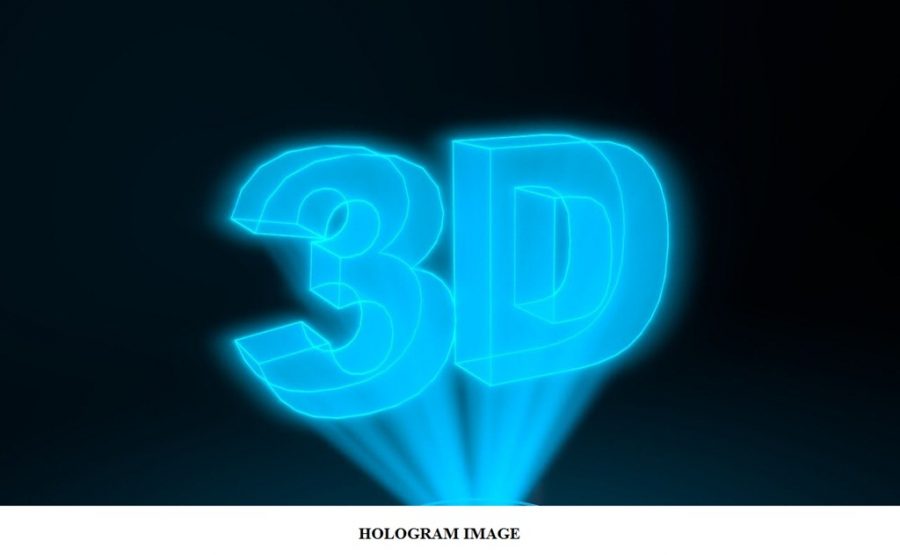
Popular culture has often glamorized holography, but its scientific roots have profound implications. For instance, the analysis of interference patterns in light has led to groundbreaking insights in various areas of science, such as photonics and the study of gravity across the universe, as demonstrated by the LIGO Observatory. These insights underscore the broader scientific impact of holography beyond its visual appeal. Furthermore, holography holds promise for revolutionizing 3D visualization. Unlike VR headsets that can cause nausea and eye strain due to the illusion of 3D viewing on fixed-distance 2D displays, holograms offer a true three-dimensional representation.
They provide a dynamic perspective based on the viewer’s position and allow the eye to adjust focal depth naturally, offering a more comfortable and immersive experience. In summary, the practical application of holography has been enabled by key technological breakthroughs such as the invention of the laser, advancements in holographic data storage, and the synergistic developments in optics and interferometry.
What are some anticipated future applications of holography in industries such as medicine, entertainment, or education?
Holography, with its capability to produce three-dimensional images, is anticipated to revolutionize various industries such as medicine, entertainment, and education, providing new avenues for innovation and enhanced user experiences.
In the medical field, holography holds potential for substantial advancements. One promising application is in surgical planning and education. Holographic displays can create 3D representations of anatomical structures, enabling surgeons to visualize and rehearse complex procedures before operating on patients. This level of detailed visualization can improve surgical accuracy and patient outcomes. Additionally, medical students and professionals can use holograms for more interactive and immersive learning experiences, helping them understand intricate anatomical details and disease mechanisms more effectively.
In the entertainment industry, holography is already making waves and is expected to continue evolving. Holographic technology can bring deceased artists back to the stage, creating posthumous performances that captivate audiences. For instance, artists like Tupac Shakur, Michael Jackson, and Whitney Houston have been “resurrected” using Pepper’s Ghost technique, offering fans a chance to experience their performances once again. Furthermore, living artists like ABBA have launched virtual reunion tours using holograms, a trend that showcases the potential for future concerts and live shows to feature interactive and lifelike holographic performers. Beyond concerts, holography can enhance the visual storytelling in movies and stage productions by creating lifelike, immersive visual effects.
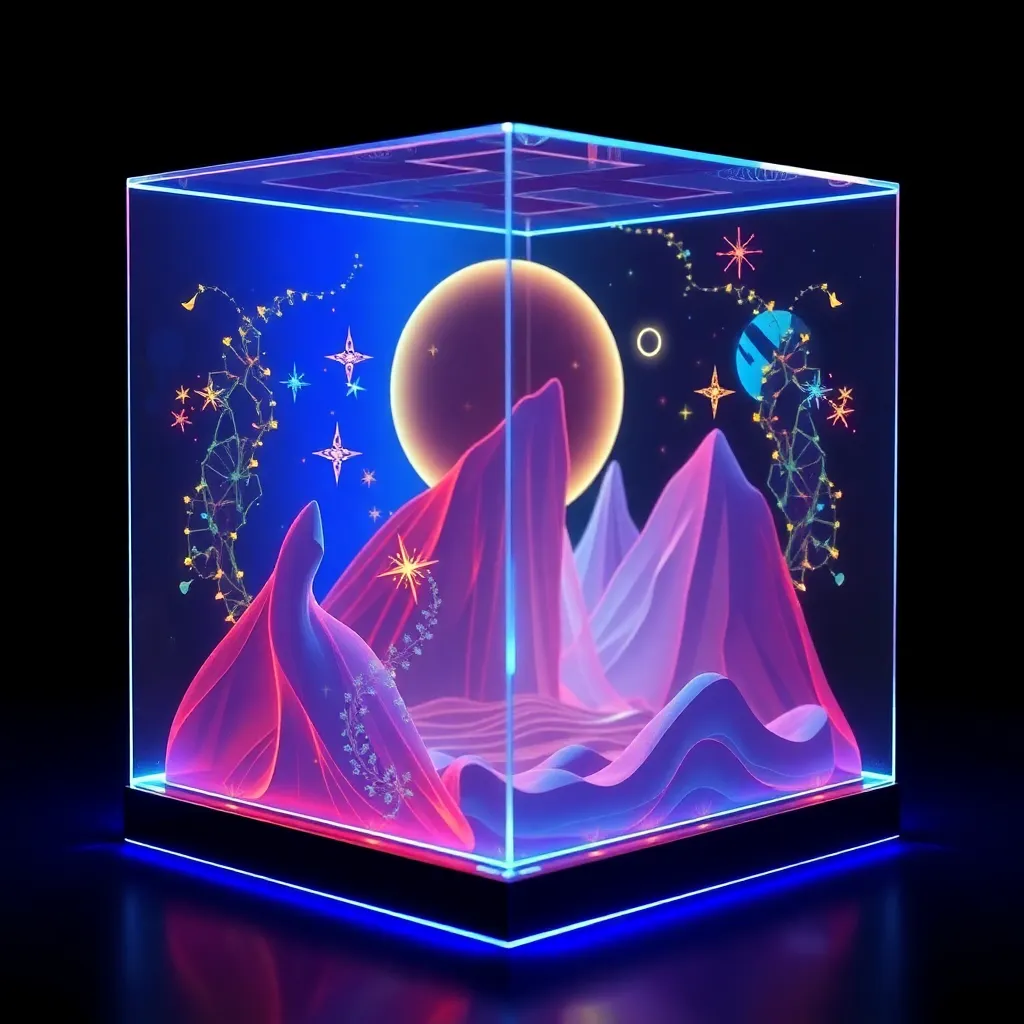
In the realm of education, holography is set to transform the way knowledge is imparted and received. Holographic technology can facilitate remote teaching by beaming instructors into classrooms from thousands of miles away, creating a more engaging and interactive learning environment compared to traditional video calls. Moreover, educational tools such as make-your-own hologram kits are being used in K–12 schools and colleges to teach students about holography, potentially cultivating the next generation of engineers, artists, and entrepreneurs in this field. Classroom simulations using holograms can also provide students with hands-on learning experiences that are otherwise difficult to achieve, such as virtual laboratory experiments or historical reenactments. These examples illustrate the wide-ranging potential of holography in transforming various sectors.
What are the key scientific principles behind holography, particularly regarding wavefronts and light interference?
The key scientific principles behind holography primarily involve the manipulation of wavefronts and the phenomenon of light interference. Holography is a technique that allows for the recording and later reconstruction of an optical wavefront. This is achieved through the creation of a hologram, which can generate three-dimensional images as well as serve other applications like data storage, microscopy, and interferometry. The process of creating a hologram involves superimposing a second wavefront, known as the reference beam, onto the wavefront of interest. This interaction generates an interference pattern, which is then recorded on a physical medium.
When the recorded interference pattern is illuminated by the reference beam alone, it is diffracted in such a way that the original wavefront is recreated, allowing the observer to perceive a three-dimensional image. Light interference, which is central to holography, occurs when two coherent light waves (waves of the same frequency and phase) overlap. The result of this overlap is an interference pattern—a distribution of light intensity that varies due to the constructive and destructive interference of the light waves. In the context of holography, this interference pattern is recorded and can be later used to reconstruct the original wavefront, thus recreating the 3D image. Furthermore, holography can also be executed digitally.
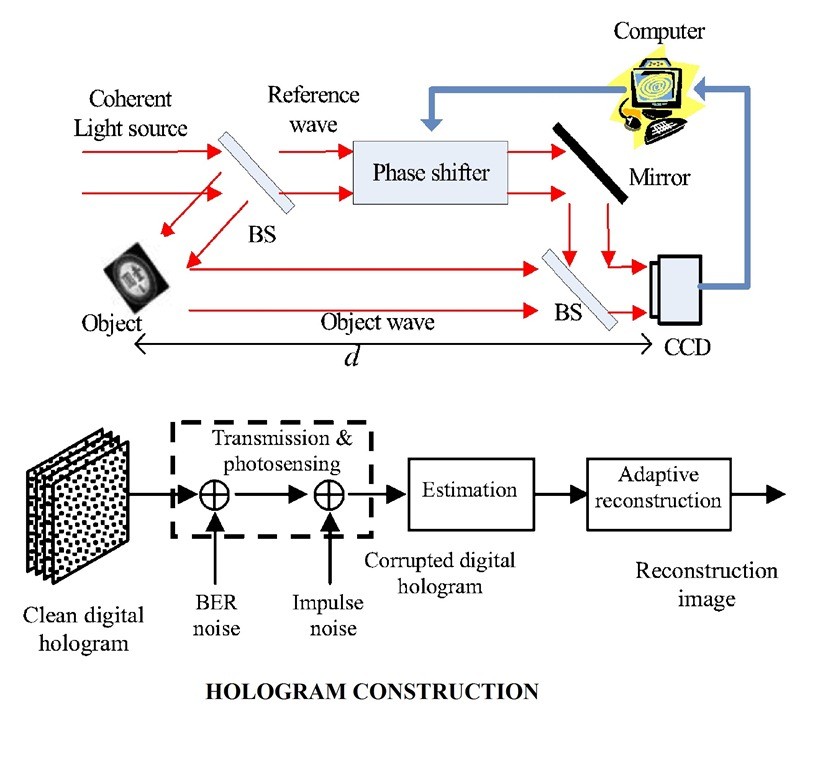
Computer-generated holograms involve modeling the two wavefronts digitally, combining them to simulate the interference pattern. This digital pattern can then be printed onto a suitable medium and illuminated to reconstruct the wavefront of interest. Holography is a versatile technique not limited to visible light; in principle, it can be used to create holograms for any type of wave, such as sound or radio waves. The adaptability of holography to various wavelengths of light and its dependence on fundamental principles of wavefront reconstruction and light interference underscore its potential for future technological advancements, including more immersive 3D visualization and data storage solutions.
In summary, the principles behind holography are deeply rooted in the physics of wavefronts and light interference, enabling the creation and reconstruction of three-dimensional images and a multitude of other applications.
What are some of the most promising future applications of holography that you see emerging in fields like medicine, entertainment, or education?
Holography is poised to revolutionize several key fields, including medicine, entertainment, and education, by offering immersive and interactive 3D visualization capabilities that were previously unimaginable.
Medicine: In the medical field, holography holds immense promise for enhancing diagnostic and surgical procedures. Holographic technology can be used to create detailed, three-dimensional images of patient anatomy, allowing doctors to examine organs and tissues with unprecedented clarity. This can be particularly useful in planning complex surgeries, where a holographic model of the patient can help surgeons understand intricate details and plan their approach more effectively. Additionally, holographic simulations can be employed in medical education, providing students with realistic models for study and practice.

Entertainment: The entertainment industry has already seen significant advances in holography, and the future holds even more exciting possibilities. Holograms have transformed live performances, enabling posthumous concerts featuring legends like Tupac Shakur and Michael Jackson, as well as virtual reunions for living artists like ABBA through their “ABBAtars“. These lifelike 3D projections create immersive experiences for audiences, offering a blend of nostalgia and cutting-edge technology. Moreover, holographic technology is being integrated into movies and television, enhancing the visual spectacle and interactivity of the content. As technology advances, we can expect to see even more sophisticated holographic performances and interactive entertainment experiences.
Education: Holography has the potential to transform education by providing immersive learning experiences. In the classroom, holographic displays can bring subjects to life, allowing students to interact with 3D models of historical artifacts, complex scientific concepts, and biological structures. This can make learning more engaging and effective, as students can visualize and manipulate objects in a way that traditional textbooks and 2D screens cannot offer. For instance, medical students can practice procedures on holographic patients, and history students can explore ancient civilizations through holographic reconstructions.
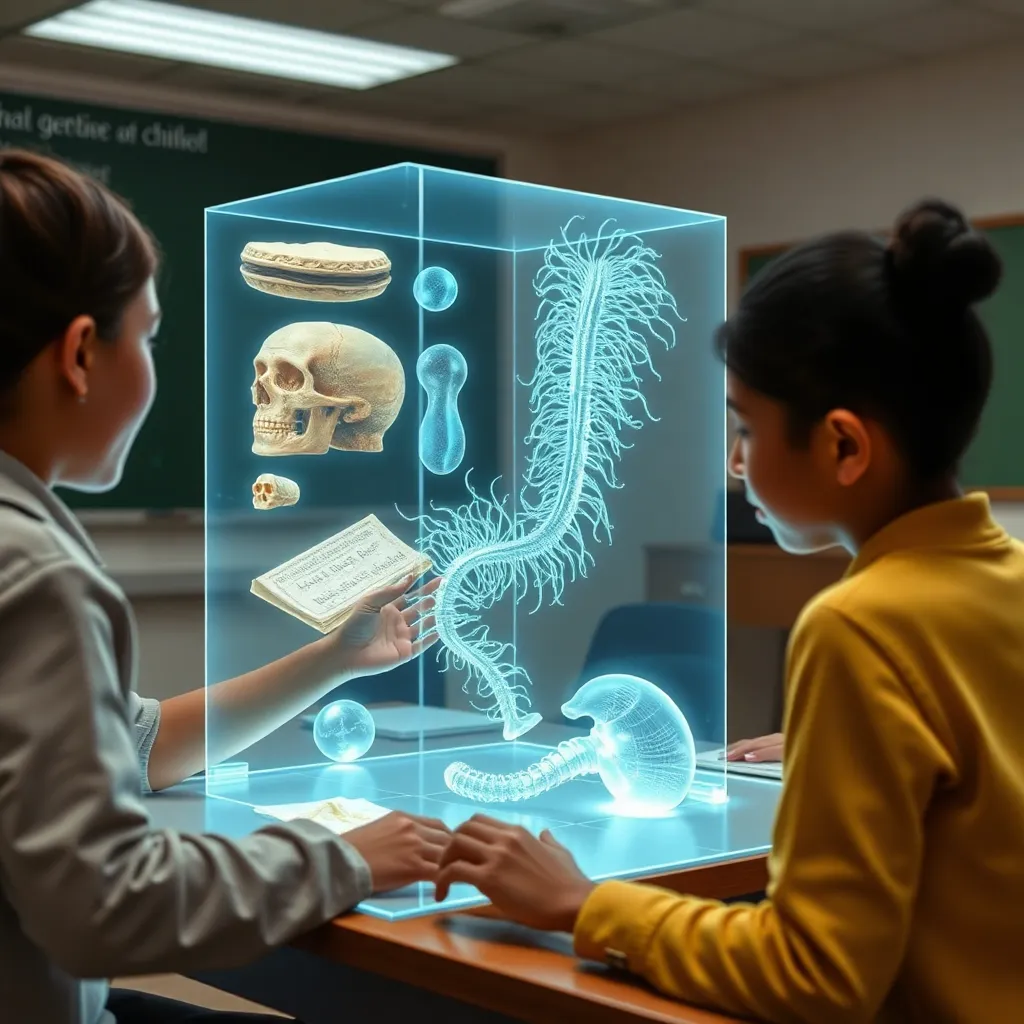
Conclusion: Holography is on the cusp of unlocking a captivating world of 3D visualization across various fields. Its applications in medicine, entertainment, and education are just beginning to be realized, and the future promises even more groundbreaking developments as technology continues to evolve. The ability to create lifelike, interactive 3D images without the need for special glasses or equipment is setting the stage for a new era of innovation and experience.
What recent technological advancements in holography do you think will significantly impact its future applications in fields like medicine, entertainment, and education?
Recent technological advancements in holography have significantly enhanced its potential applications across various fields, including medicine, entertainment, and education. These innovations are transforming how we visualize and interact with information in three dimensions, leading to more immersive and engaging experiences. In the entertainment industry, holographic technology has seen substantial growth, particularly in live performances. Holograms of famous artists like Tupac Shakur, Michael Jackson, and ABBA have allowed fans to experience concerts in a way that was previously unimaginable. This technology enables posthumous performances, giving audiences the opportunity to “see” legendary musicians and actors long after their passing. For instance, the ABBA Voyage virtual reunion tour utilized advanced holographic techniques to create “ABBAtars” that perform in real-time alongside live musicians.
Moreover, these holographic performances are often created using a combination of holography and other visual effects techniques, such as Pepper’s Ghost. Although not true holograms, Pepper’s Ghost uses 2D images reflected off a semi-transparent surface to create the illusion of a 3D object. This technique has been refined and integrated into modern holographic displays to produce more realistic and volumetric visuals, further enhancing the audience’s experience. In the medical field, holography is poised to revolutionize how professionals visualize and interact with complex anatomical structures. By generating 3D images that can be viewed without special glasses, holographic technology allows for detailed and accurate representations of the human body.
This capability is particularly useful in surgical planning, medical education, and patient communication. Surgeons can use holograms to visualize organs and tissues in three dimensions, improving precision and outcomes in complex procedures. In education, holography offers new opportunities for interactive learning. Holograms can bring historical events to life, provide detailed visualizations of scientific phenomena, and create immersive environments for students to explore. For example, students can study the intricacies of the human body or explore distant planets through lifelike holographic models, making learning more engaging and effective.
The advancement of holographic technology is largely driven by improvements in laser technology, optical recording, and computational methods. By capturing and reproducing the interference pattern of light waves reflected from an object, holography creates images with depth and realism. These developments are critical in producing high-quality holograms that can be used in various applications, from entertainment to education.
What are some of the most significant recent innovations in holography that are shaping its commercial applications?
Recent innovations in holography are rapidly transforming its commercial applications across various sectors, and several key technological advancements are driving this evolution. Firstly, developments in anti-counterfeit technologies are significantly influencing the holographic industry. The introduction of micro-lenses, micro-mirrors, and plasmonics, which are optical devices derived from holographic and diffractive technologies, is expanding the application of holography in security and authentication. These technologies necessitate new foils and manufacturing processes, offering new opportunities for hologram manufacturers to secure additional market share and demonstrate the continued relevance of holography. Another significant innovation is in the realm of real-time 3D holographic displays.
Traditional methods of generating computer-generated holograms (CGHs) have been computationally intensive and impractical for real-time applications. However, recent breakthroughs in this area are overcoming these challenges, enabling lifelike 3D reproductions with continuous depth sensation. These advancements hold promise for applications in entertainment, medical imaging, and virtual reality. Moreover, advancements in display technology have led to the development of devices small enough to fit in regular eyeglasses, which could produce the most realistic holograms ever seen. This innovation addresses the age-old trade-off in holographic displays and could revolutionize how we experience 3D visualization.
Additionally, augmented reality (AR) headsets that utilize holographic imaging to overlay full-color, 3D moving images on the lenses of ordinary-looking glasses are making waves. Unlike bulky AR headsets, these new devices offer a visually satisfying 3D viewing experience in a compact, comfortable form factor suitable for all-day wear. This development points to a future where immersive AR experiences are seamlessly integrated into everyday life. Finally, the entertainment sector is witnessing creative applications of holography, such as the Hologram Zoo, which offers immersive experiences by displaying 3D holographic images that interact with viewers.
Such applications demonstrate the potential of holography to captivate and engage audiences in ways never seen before. In summary, the most significant recent innovations in holography include advancements in anti-counterfeit technologies, real-time 3D holographic displays, compact and realistic holographic devices for eyewear, and immersive AR headsets. These innovations are paving the way for broader commercial applications and heralding a new era of 3D visualization.
How are businesses currently integrating recent holographic innovations into their products and services, and what specific sectors are leading this trend?
Businesses are increasingly integrating recent holographic innovations into their products and services across various sectors, with significant contributions from healthcare, security, retail, and industrial applications. The global digital holography market, valued at USD 3.24 billion in 2022, is expected to grow at a compound annual growth rate (CAGR) of 18.
What are the main challenges that businesses encounter when trying to integrate holographic technology into their existing products and services?
Integrating holographic technology into existing products and services presents several challenges that businesses must navigate to leverage the full potential of 3D visualization. Firstly, infrastructure is a significant hurdle. Effective holographic communication and displays require high-speed, low-latency networks, which are not yet universally accessible. According to a report by TechCrunch, only 53% of the global population had internet access in 2021, highlighting a substantial digital divide that could impede widespread adoption of holographic technologies.
Cost is another critical challenge. Developing, deploying, and maintaining holographic technology is expensive. High-quality holographic displays and the hardware needed to support them, such as the Microsoft HoloLens, require substantial investment. For instance, industries such as the furniture sector have found it slow to embrace such innovations due to cost concerns, despite the transformative potential of 3D visualization technologies.
Furthermore, there is the technical complexity associated with integrating holographic systems into existing infrastructures. Businesses need specialized skills and knowledge to develop and manage holographic content effectively. This necessitates either hiring skilled personnel or investing in training for existing staff, which can be both time-consuming and costly.
Additionally, the lack of standardized formats and interoperability between different holographic systems poses a challenge. As with many emerging technologies, the lack of standardized protocols can lead to compatibility issues, hindering seamless integration and communication across platforms. User experience and interface design also present significant challenges. Designing intuitive and user-friendly interfaces for holographic systems is complex, requiring a deep understanding of both the technology and human interaction. Companies must ensure that the user experience is seamless and does not overwhelm or alienate users, which can be a difficult balance to strike.
Market readiness and consumer acceptance are equally crucial. While the technology is advancing rapidly, consumer readiness to adopt holographic interfaces in everyday life remains a question. Businesses must not only introduce the technology but also educate and convince their user base of its value and usability. Finally, data security and privacy concerns must be addressed. As holographic technologies capture and transmit large volumes of data, ensuring that this data is secure from breaches is paramount. This requires robust security measures, which can add to the complexity and cost of implementation.
What are the current advancements in holography technology that are shaping its future applications?
The future of holography is being shaped by a series of groundbreaking advancements that promise to unlock new applications in various fields, particularly in virtual reality (VR) and augmented reality (AR). Here are some of the current advancements in holography technology:
1. Enhanced 3D Visualization: One of the most significant advancements is the development of dynamic ultrahigh-density 3D holographic projections. Researchers have found ways to pack more details into 3D images, which enables the creation of realistic representations of the world around us. This advancement has the potential to enhance VR and AR applications by offering a truly immersive experience. According to Lei Gong, who led a research team from the University of Science and Technology of China, this technology could greatly improve viewing angles in headset-based holographic displays, enhancing the 3D viewing experience.
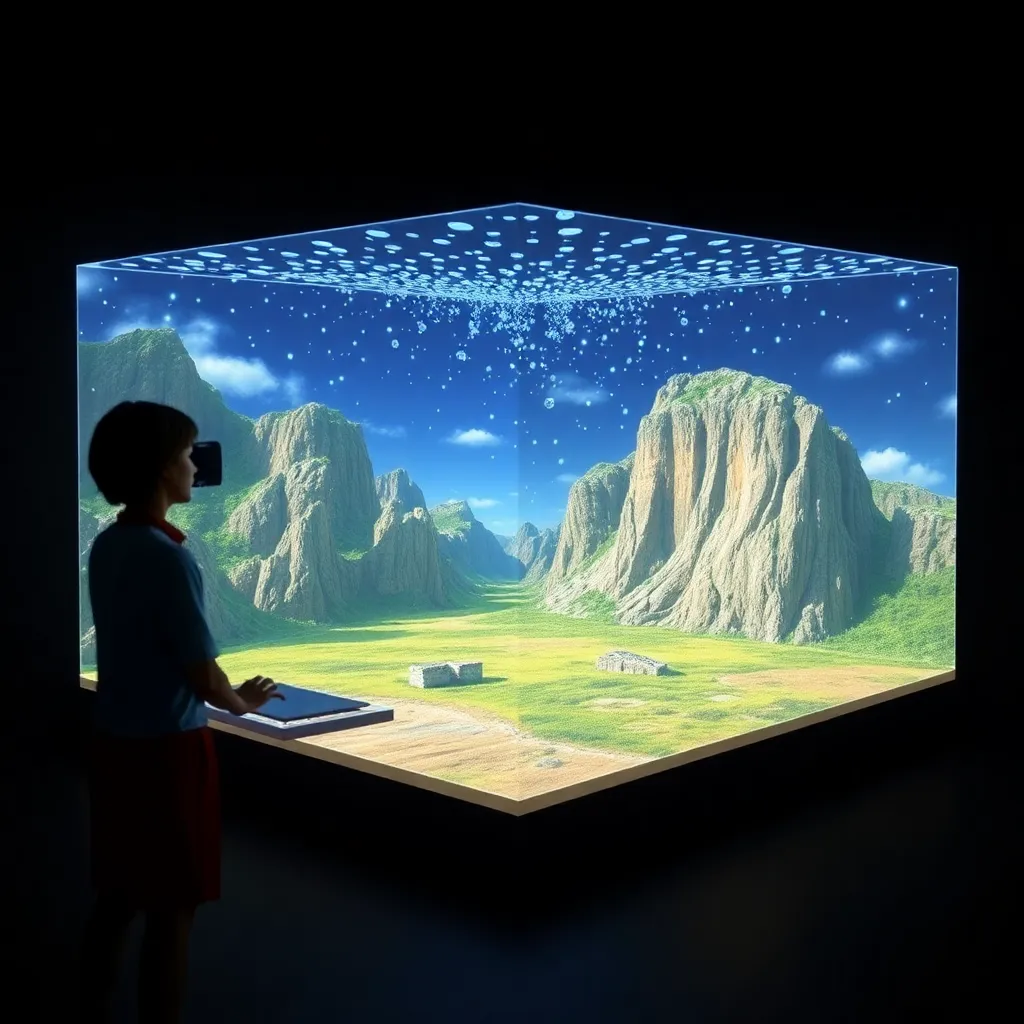
2. Immersive Holographic Displays: Unlike traditional monitors that simulate depth on a 2D screen, holographic displays offer real three-dimensional depth. This allows for the integration of holographic images seamlessly into our everyday view, creating a truly immersive experience. The ability to move one’s head normally without losing the holographic image from view is a significant advantage over current VR systems that often cause discomfort and disorientation.
3. Real-time 3D Holograms: Technological advancements are bringing us closer to the realization of real-time 3D holograms, reminiscent of those seen in science fiction like “Star Trek.” These holograms can be interactive, allowing users to touch and feel the projected images. This is a leap forward from the current VR and AR headsets, which have struggled to gain widespread adoption partly due to their disorienting nature and high cost.
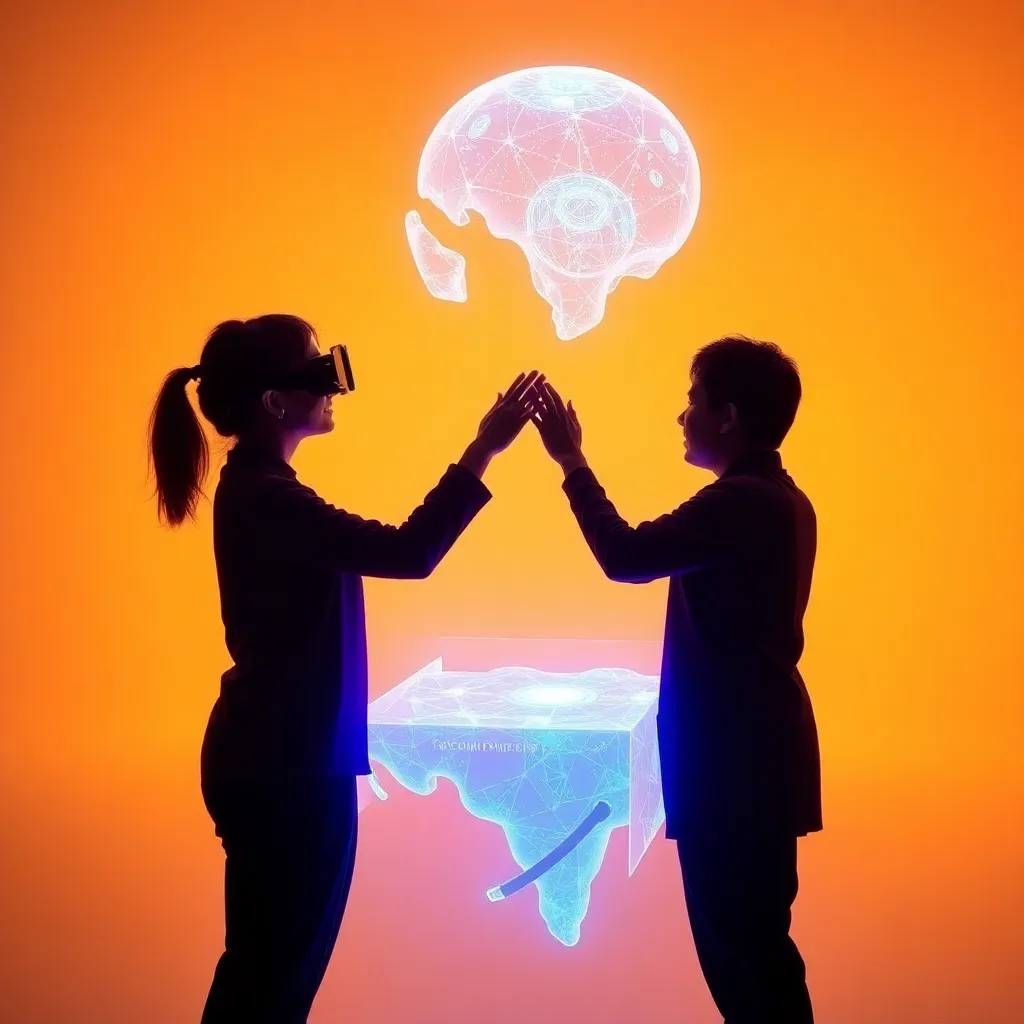
4. Commercial Holographic Solutions: Companies such as Holoconnects are making strides in bringing advanced holographic solutions to market. Their products, such as the Holobox, the Modular Holobox, and the Holobox Mini, can project lifelike 3D holograms of people, products, or logos. These solutions are being showcased at events like CES 2024, indicating that holographic technology is not just a theoretical concept but a commercial reality.
What are some of the primary challenges currently facing the advancement of holography technology?
The advancement of holography technology faces several primary challenges that need to be addressed to fully realize its potential in various applications. These challenges encompass both technical limitations and practical implementation issues.
1. Technical Complexity and Detail Resolution: One significant hurdle is the creation of dynamic ultrahigh-density 3D holographic projections. Current digital holographic techniques often struggle with bottlenecks related to the resolution and detail of the holographic images. Researchers from the University of Science and Technology of China have developed a new method to pack more details into 3D images, which could enable more realistic representations for virtual reality and other applications. However, achieving consistently high detail resolution remains a challenge.
2. Immersive Experience Requirements: The immersive nature of holographic displays requires them to integrate seamlessly into our normal view of the everyday world, a feature that traditional 2D screens cannot offer. Felix Heide, an assistant professor of computer science, noted that to get a similar immersive experience using a monitor, one would need to sit directly in front of a cinema screen. This means that holographic displays must overcome the challenge of creating a consistent and immersive visual experience that doesn’t degrade with movement or viewing angle.
3. Technological Evolution and Integration: Holography technology must continue to evolve and integrate with both optical and digital systems to maintain its relevance and improve its applications. Dr. Paul Dunn of the International Hologram Manufacturers Association highlights the importance of innovative and sophisticated design solutions to enhance security applications. This involves reshaping the role and nature of holograms in document and ID security to combat counterfeiting and ID fraud effectively.
4. Practical Implementation in Various Industries: While holographic technology holds promise for revolutionizing industries such as entertainment, advertising, education, and healthcare, its practical implementation presents challenges. For instance, ensuring the widespread adoption and integration of holographic displays into existing systems and workflows requires significant investment and adaptation.
5. Resource and Cost Constraints: The development and deployment of high-quality holographic displays are resource-intensive, involving advanced materials and sophisticated engineering processes. This can drive up costs, making it difficult to achieve mass-market penetration and affordability for consumers and businesses alike.
What are some specific industries or sectors where holography is expected to have the most significant impact in the near future, and how will it change current practices?
Holography is poised to significantly impact several key industries in the near future, transforming current practices in ways that were once the domain of science fiction. One of the most notable sectors where holography is expected to make a substantial impact is healthcare. According to gathered information, holography can provide detailed and realistic representations of anatomical structures, which are invaluable for medical diagnostics and treatment planning.
By enabling healthcare professionals to visualize complex organs in three dimensions, holography enhances diagnostic accuracy and facilitates more effective patient communication and precise surgical interventions. This not only improves patient outcomes but also represents a paradigm shift in medical training and education, as medical students can interact with 3D anatomical models in real-time. The entertainment industry is another sector set to be revolutionized by holography. Holographic displays are transforming the way audiences experience content by providing immersive and lifelike 3D visuals.
The Hologram Zoo in Australia, which features 50 lifelike holographic displays of animals, exemplifies how holography can create compelling and interactive experiences that captivate and engage visitors. This technology has the potential to redefine theme parks, museums, and live performances by making them more interactive and immersive. In the field of education, holography promises to revolutionize the way information is presented and consumed.

Holographic displays can create interactive 3D models that enhance learning by making abstract concepts tangible and easier to understand. This can significantly improve the effectiveness of teaching in subjects such as science, engineering, and history. The advertising industry is also poised to benefit from holography. With the ability to project 3D holograms of products, logos, or even celebrities, companies can create eye-catching advertisements that stand out in a crowded marketplace.
Holoconnects, a leader in AI-powered holographic solutions, showcases how brands can leverage holography to create memorable and engaging marketing campaigns. Furthermore, holography has significant applications in the security and anti-counterfeiting sector. The technology’s ability to provide enhanced security features helps protect products and ensure their authenticity, which is crucial for combating counterfeiting in industries such as currency, pharmaceuticals, and consumer goods. As the global market for digital holography continues to grow, with an anticipated compound annual growth rate (CAGR) of 18.8% from 2023 to 2030, its adoption for security purposes is likely to increase.
